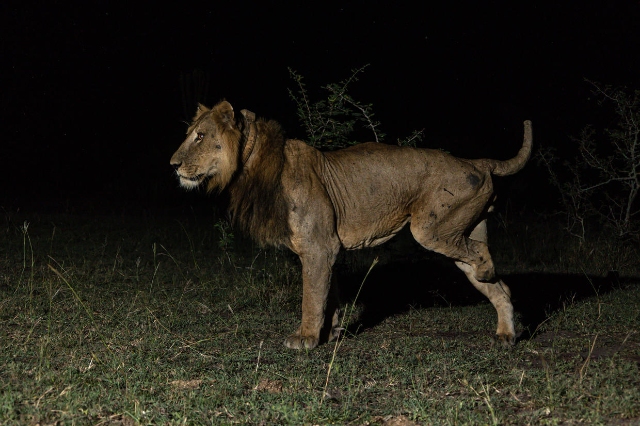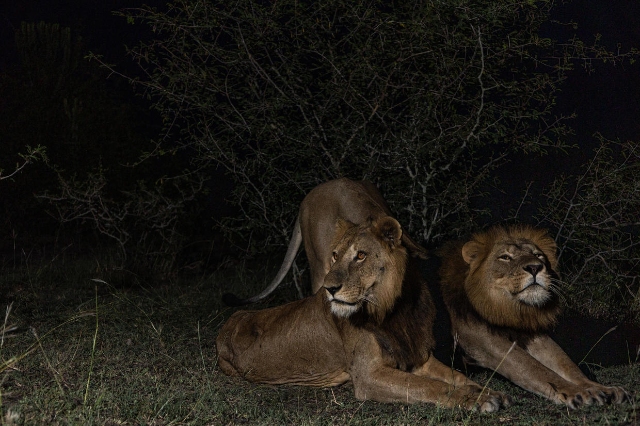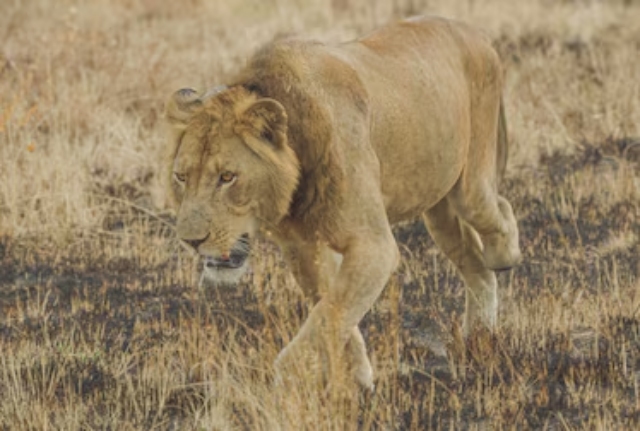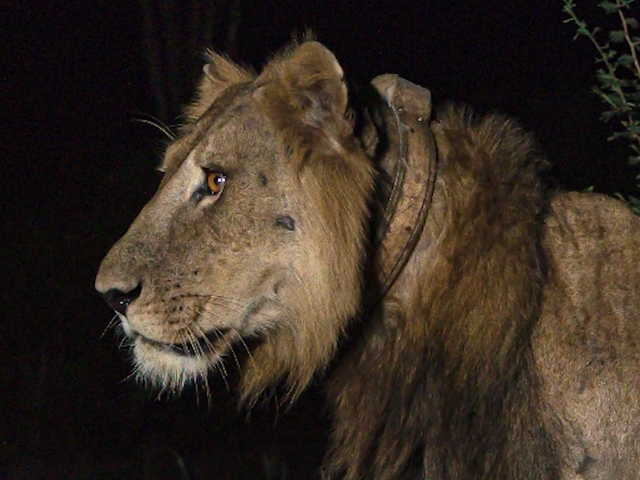
-
“Africa’s Most Resilient Lion” Survived Being Gored, Almost Poached, And Swimming Across Croc-Infested River
11 Jul 2024 by Tayla in Animals, Conservation, Nature, World
[imagesource:Facebook/Alexander Braczkowski]
When they say cats have nine lives, they’re probably talking exclusively about Jacob the lion.
If ever there was an animal that just kept going, despite countless near-fatal experiences, it is the animal known as “Africa’s most resilient lion”.
The 10-year-old lion named Jacob has survived being snared, trapped, poisoned, and a buffalo goring. I’ll say that again, Jacob survived being gored and his family being poisoned for body parts and an attempted poaching that left him an amputee, and now he has just broken an incredible record alongside his brother by swimming across predator-infested waters known to be deadly for their species.
What an absolute beast.

Image: Alex Braczkowski
As one of Uganda’s tree-climbing lions, Jacob was caught in a wheel trap—similar to a bear trap— at the age of six in neighbouring Virunga National Park, within the Democratic Republic of the Congo, where his pride sometimes roams.
In August 2020, the human-made trap cut off his leg just above the foot. After getting treated several times by veterinarians from the Uganda Wildlife Authority, he’s learned to move around on three legs and even joins his pride on hunts.
CBS News reported that Jacob’s story was documented in a new study published in Ecology and Evolution led by researchers at Griffith University in Australia and Northern Arizona University.
Using drones equipped with high-definition heat detection cameras, they filmed Jacob and his brother Tibu crossing the Kazinga Channel in Uganda. According to the Queen Elizabeth National Park, the channel reaches a width of 20 miles and holds “the biggest population of hippos and numerous crocodiles in the whole world.”
Most lions trying to cross that channel only make it between 10 and a few hundred meters in because it’s full of predators. Some of these attempts end fatally due to the crocodiles and hippos. And yet, the two brothers made it, swimming what researchers believed to be 1.5 kilometres from bank to bank in the dead of night.

Lion brothers Jacob and Tibu | Image: Kaganda
Alex Braczkowski, a lion researcher from Griffith’s Centre for Planetary Health and Food Security and a National Geographic Explorer, has been keeping a close eye on Jacob ever since he lost his leg.
He mentioned that the lions likely made the dangerous journey in search of females. Although there’s a small bridge connecting both sides of the waterway, the presence of people probably kept the lions from using it. You can understand why the lions would prefer to avoid our species at all costs, having almost died at our hands a number of times before. It was the croc and hippo-infested river or the ghastly humans and they made their choice.
“Competition for lionesses in the park is fierce and they lost a fight for female affection in the hours leading up to the swim,” he said, “so it’s likely the duo mounted the risky journey to get to the females on the other side of the channel.”
Braczkowski says Jacob’s incredible resilience is an inspiration in the NatGeo article saying the “three-legged lion is a symbol of hope”:
“It just shows that if these animals are given half a chance to continue, they can still eke out an existence, and that’s pretty amazing,” says Braczkowski. “It’s heroic stuff.”
Just surviving these circumstances, largely caused by humans, “is a feat in itself,” Braczkowski added, saying that the lion population they belong to has nearly halved in five years.
“Jacob has had the most incredible journey and really is a cat with nine lives,” Braczkowski said. “I’d bet all my belongings that we are looking at Africa’s most resilient lion: he has been gored by a buffalo, his family was poisoned for lion body part trade, he was caught in a poacher’s snare, and finally lost his leg in another attempted poaching incident where he was caught in a steel trap.”

Image: Alex Braczkowski
“His swim, across a channel filled with high densities of hippos and crocodiles, is a record-breaker and is a truly amazing show of resilience in the face of such risk,” Braczkowski said. “…Jacob and Tibu’s big swim is another important example that some of our most beloved wildlife species are having to make tough decisions just to find homes and mates in a human-dominated world.”
Lions are considered a vulnerable species with overall declining populations, according to the IUCN Red List. In some regions, especially West Africa, the IUCN suggests that populations have likely dropped so much that lions could be considered endangered.
What a story. What a character.
[source:cbsnews]
Latest News
-
Powerful South African Short Film ‘The Last Ranger’ Scoops Up Awards And International Praise
[imagesource: Cindy Lee Director/Facebook] A compelling South African short film, The L...
-
Caprice Summer Has Started With Brunch (But Better) This Saturday + Other Lush Camps Bay Parties
[imagesource: Instagram/cafecaprice] Is it just me or has Summer been taking its sweet ...
-
Notre-Dame Cathedral In Paris Restored And Ready For Grand Reopening After Devastating Fire
[imagesource:wikimedia] After five years of work and millions in donations, The Notre-D...
-
Self-Destructing Number Plates: The Future Of Gauteng’s Roads Or Spy-Tech Fantasy?
[imagesource:worldlicenseplates.com] What sounds like a James Bond movie is becoming a ...
-
I Changed My Relationship With Food And You Won’t Believe What Happened Next
[imagesource:supplied] As the festive season approaches, it's time to deck the halls, g...
-






























